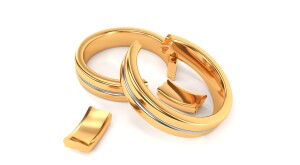Imagine this: You text a friend to ask if she wants to get together later today and go out to eat. Three hours later, no response. What do you think and do?
A. Assume she’s busy and will get back to you before it’s too late.
B. You’ve already called and texted her several times. You try again. When she still doesn’t respond, you send a message stating, “Wow, you could’ve just said no.” You ignore her when she calls.
C. Assume no response is her response. You’re not dealing with the BS, so you don’t answer her calls or respond to her texts for days.
Your reaction to that hypothetical scenario is an indicator of your attachment style. “According to the attachment theory, very early in life with our parents, we develop a template of how people will respond to us based on how our parents would have responded,” says Marisa G. Franco, Ph.D., a psychologist and author of Platonic: How the Science of Attachment Can Help You Make — and Keep — Friends.
While many people think about attachment styles when it comes to romantic relationships, they’re just as important in friendships. “Each attachment style is like the trunk of a tree that branches out into tons of different behaviors that, depending on the attachment style, can either hurt or help your friendships,” Dr. Franco says.What’s your attachment style?
In Platonic, Dr. Franco discusses three main types of attachment:
Secure [A]: This is the goal. It forms when parents were nurturing, validating and consistent. “If you have a secure attachment style, you’re able to give and receive love, you’re very optimistic about your social connections and you assume people like you,” Dr. Franco says.
Anxious [B]: People develop this attachment style if their parents were inconsistent and weren’t always available when they needed them, Dr. Franco says. That leads to fears people will abandon you. If you’re anxious attached, you may be clingy and overly accommodating to others, and you may get upset if you think someone is rejecting you.
Avoidant [C]: “If our parents were neglectful, we assume people won’t meet our needs, so we become hyper-independent and hyper-self-sufficient,” Dr. Franco says. This can mean you keep people at a distance, don’t really express your needs to others and are quick to cut folks off.
Once you know your attachment style, work toward developing a secure one, Dr. Franco says. That will allow you to build and maintain happier and healthier friendships.Some tips to help:
Know it’s possible to make friends as an adult. Oftentimes, we think everyone already has their friendship group. However, research shows society is quite lonely and disconnected, especially since the pandemic, Dr. Franco says. Instead of having the mindset that everyone already has their clique, it’s better to assume people want to connect, she says. Take the initiative. Say hello. Introduce yourself.
Believe in your likability. Until someone shows you otherwise, your default assumption should be that people like you and want the best for you, Dr. Franco says. In turn, you’ll come across as warm and friendly, which will make you even more likeable.
Go for repeat exposure. “According to the psychology phenomenon called the near exposure effect, the more we’re exposed to people, the more we like them,” Dr. Franco says. So use your hobbies and interests, things you like to do frequently, to build your community, she says. If dance is your thing, sign up for a weekly class. Love reading? Join a local book club. The repeated interactions can help expand your circle.
“Practice” with a secure sister. “We know from research that secure people tend to make people around them feel secure,” Dr. Franco says. Identify someone in your life who has a secure attachment style and then practice secure behaviors with them, she says. So if you’re avoidant, that could mean instead of shutting down when your bestie crosses a line, you encourage yourself to try something different, like talking about the issue instead.
Consider your friends’ attachment styles. Use your new knowledge to improve your friendships. For instance, you don’t necessarily have to kick your needy pal to the curb. Part of having a secure attachment style is setting healthy boundaries, Dr. Franco says. You could say something like, “Hey, girl, I want to spend time with you, but I also have other commitments. Let’s meet up once a week instead of multiple times each week.”
Go for the good. As you’re making friends and trying to strengthen bonds, think quality over quantity. Some relationships may be worth keeping; others, you’re probably better off ending. The goal is healthy friendships that are mutually beneficial and satisfying for all involved.

Amanda Howell Whitehurst










